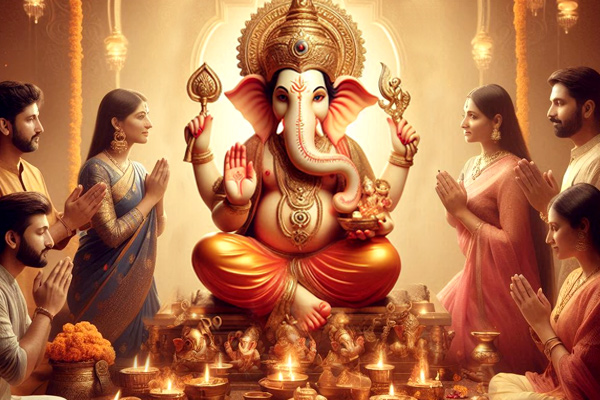
प्रणम्य शिरसा देवं गौरीपुत्रं विनायकम् ।। भक्तावासं स्मरेनित्यमायु:सर्वकामार्थसिध्दये ।।
ॐ श्री गणेशाय नम:
Salutations to Sri Ganesha who is the Deva to be Saluted first by bowing the Head, who is the Son of Gauri, and who is Vinayaka, who is the abode of the devotees, and who should be remembered always for accomplishing Long Life, Health, Fulfillment of Desires and (also) Objectives (of Life).
What is Ganesh Chaturthi?
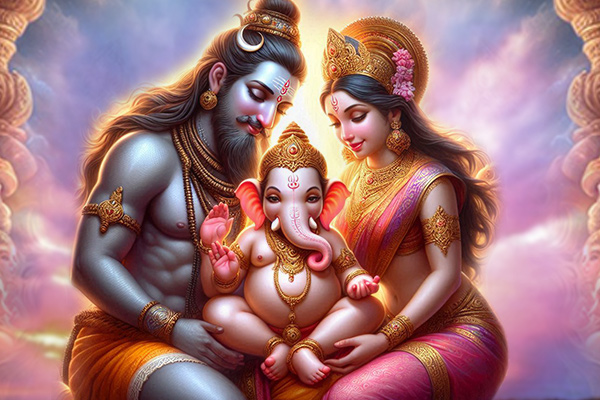
Ganesh Chaturthi is one of the most revered festivals in Hinduism, celebrating the birth of Lord Ganesha, the son of Bhagwan Shiva and Maa Parvati. Ganesha, the remover of obstacles, is a god of wisdom, prosperity, and new beginnings. His birth marks the beginning of a 10-day celebration where devotees welcome Ganesha into their homes and hearts, seeking his blessings for success and the removal of challenges in their lives.
Ganesh Chaturthi Tithi & Muhurat (Date & Time)
Ganesha Chaturthi on Monday, September 14, 2026
Madhyahna Ganesha Puja Muhurat - 11:02 AM to 01:31 PM
Duration - 02 Hours 28 Mins
Ganesha Visarjan on Friday, September 25, 2026
Time to avoid Moon sighting - 09:01 AM to 08:09 PM
Duration - 11 Hours 08 Mins
Chaturthi Tithi Begins - 07:06 AM on Sep 14, 2026
Chaturthi Tithi Ends - 07:44 AM on Sep 15, 2026
Why is Ganesh Chaturthi Celebrated?
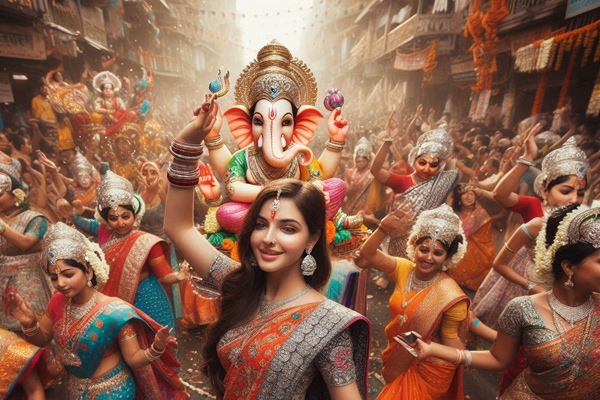
Ganesh chaturthi is first day of 10 days festival celebration. It is also known as Vinayaka Chaturti. Ganesh Chaturthi is celebrated for 10 days. Hindus celebrate it as the arrival of Ganesh to Earth from Kailash Parvat with his mother Parvati. Devotees celebrate this festival by installing clay idols of Ganesha . This is done either at homes or public spaces by making pandals or stages. He is the Lord of letters and is associated with intellectualism. Hence, he is the patron of authors, bankers, scholars and the like.
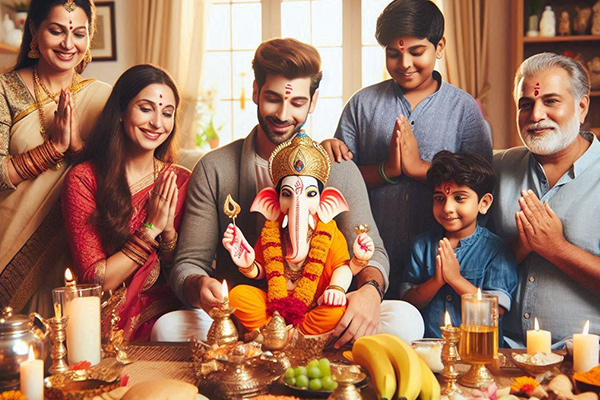
He is also called ‘Vighnaharta’ i.e. the remover of obstacles. deep research of holy Vedas and pious Bhagavad Gita and other scriptures provides evidence that the whole universe is created by Aadi Ganesha who is immortal. He is the destroyer of sins. (Yajurved Adhyay 8 Mantra 13) He is the remover of obstacles.
Few of the most popular names Ganesh is addressed with are ‘Ganapati’, ‘Gajanana’ ‘Vinayak’, ‘Lambodar’, ‘Sukhakarta’, ‘Dukhaharta’, etc. With an elephant head and a huge belly, Ganesh is known to protect his devotees from all the Vighna (hurdles/obstacles) that come in their life.
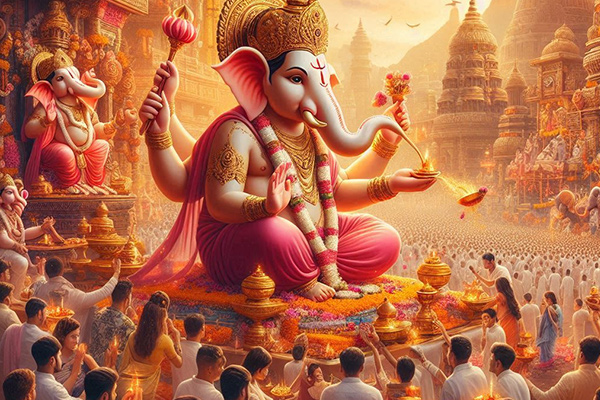
He is the highly revered and adored deity who is worshipped in almost every Hindu household. His birth anniversary is celebrated all over the nation and abroad, but the Indian state of Maharashtra is famous worldwide for celebrating Ganesh Chaturthi with great fervor, enthusiasm and total dedication.
Significance of Ganesh Chaturthi
Lord Ganesha: The Remover of Obstacles
Lord Ganesha, the son of Bhagwan Shiva and Devi Parvati, is revered as the Lord of the Ganas and the Lord of the People. He is widely known for uniting communities and for the grand celebrations held every year on Ganesh Chaturthi to honor his birth. His large head symbolizes wisdom and big thinking, while his vast ears encourage the need to listen more. His small eyes represent focus, and the rope he holds signifies the achievement of higher goals. One tusk represents retaining the good, while the broken tusk symbolizes the ability to discard negativity.
Symbolism of Ganesha's Features
Ganesha is often depicted as bestowing blessings with his right hand, representing protection on the spiritual path. The axe he holds signifies the severing of materialistic attachments. His trunk symbolizes flexibility and efficiency, and his large potbelly signifies the quiet digestion of both the good and bad experiences in life.
Ganesha's Many Names and Forms
Shri Ganesha is addressed by numerous names, including Ganapati, Gajavaktra (the one with the elephant’s mouth), Gajanan, Vighnaharta, Vinayak, Mahaganapati, and many others. His potbelly has earned him the titles Lambodara and Mahodara, while his single tusk has given him the title Ekadanta. Each of these names reflects his divine attributes and his ability to bless his devotees with wisdom, prosperity, and the removal of obstacles.
Ganesha’s Family
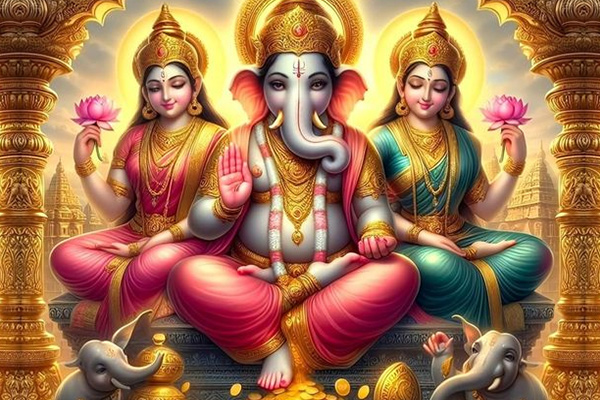
Lord Ganesha is also known for his family. His wives, Ridhi (prosperity) and Sidhi (spiritual power), represent the blessings that he bestows upon his devotees. He also has two children, Shubh (auspiciousness) and Laabh (profit), which symbolize the positive outcomes that follow devotion to him.
How Do We Celebrate Ganesh Chaturthi? (Rituals)
.jpg)
Preparing for Ganesh Chaturthi
- Ganesha Idol Selection: Bring home an eco-friendly Ganesha idol. It can be brought on the day of Chaturthi or in advance. Ensure that the idol’s trunk is turned to the left (clockwise) as this is considered auspicious. The idol can be placed with the trunk to the left, straight, or in the air. It is customary to cover the head of the idol with a red and gold-bordered cloth before installation.
- Placement of the Idol: The idol should be placed in the East or Northeast corner (Ishan-kon) of the home, never in the bedroom or near restrooms. It should face west while the devotee prays facing east. Before placing the idol, one family member should sprinkle rice on the murti and offer a small prayer to welcome Lord Ganesha.
Ganesh Sthapna (Installation) Rituals
Before installing the Ganesh idol, offer uncooked rice, betel nut, turmeric, red sandal powder, sandalwood paste, kumkum, a lamp, and a kalash filled with Gangajal to the idol.
Ganesh Sthapana Muhurat: Install the idol during the auspicious time, 11:02 AM to 1:30 PM on 14th September 2026 (Monday) .
Ganesh Chaturthi Puja Vidhi
During the 10-day celebration, four primary rituals are performed:
- Pranapratishtha – Invoking the presence of Lord Ganesha into the idol.
- Shhodashopachara – The 16-step offering ritual.
- Uttarpuja – Respectfully bidding farewell to Lord Ganesha.
- Ganpati Visarjan – Immersing the idol in water.
The idol is placed in elaborately decorated pandals (public or private altars). Flowers, garlands, and lights adorn the statue, and prayers are offered in 16 different ways during the Shhodashopachara ritual.
Shodashopachara (16-Step Ritual)
- Avahana – Begin by invoking Lord Ganesha with the Ganesh Mantra and performing the Avahan Mudra (hands joined with folded thumbs).
- Pratishthapan – After invoking Ganesha, install the idol, and offer 5 betel leaves near the idol’s feet with supari, turmeric powder, and kumkum.
- Asana Samarpan – Offer five flowers in Anjali (palms joined) and place them in front of the idol as a seat for Lord Ganesha.
- Padya Samarpan – Offer water to wash Ganesha’s feet.
- Arghya Samarpan – Offer fragrant water after Padya Samarpan.
- Achamana – Offer water for Achamana (purification) after Arghya.
-
Snana (Bathing Ritual):
Panchamrita Snanam: Bathe the idol with Panchamrit (milk, curd, honey, ghee, and sugar).
Payah Snanam: Give Ganesha a milk bath after the Panchamrita bath.
Dadhi Snanam: Bathe the idol with curd after the milk bath.
Ghrita Snanam: Offer ghee to bathe the idol.
Madhu Snanam: Offer honey to bathe the idol.
Sharkara Snanam: Bathe the idol with sugar.
Suvasita Snanam: Offer a fragrant oil bath.
Shuddhodaka Snanam: Conclude with a pure water bath. - Vastra Samarpan and Uttariya Samarpan: Offer new clothes (Moli) and upper body garments for Ganesha.
- Yajnopavita Samarpan: Offer the sacred thread (Yajnopavita).
- Gandha: Offer sandalwood paste as scent.
- Akshata: Offer complete rice (Akshata) to Ganesha.
-
Pushpa Mala, Shami Patra, Durvankura, Sindoor:
Offer a garland of flowers (Pushpa Mala).
Offer Shami Patra (leaves from the Shami tree).
Offer 3-5 Durva leaves (sacred grass).
Offer a vermilion tilak (Sindoor). - Dhoop: Offer Dhoop (incense) to Ganesha.
- Deep Samarpan: Offer Deep (lamp) to Lord Ganesha.
- Naivedya: Offer Naivedya, including Modaks, ladoos, and seasonal fruits.
- Chandan Karodvartan: Offer Chandan (sandalwood paste) mixed with water.
Tambula, Narikela, and Dakshina Samarpan
- Tambula Samarpan: Offer Paan (betel leaves) with betel nuts.
- Narikela Samarpan: Offer a coconut.
- Dakshina Samarpan: Offer gifts or some cash to Lord Ganesha.
Aarti and Pushpanjali
Pradakshina: Offer symbolic circumambulation around the idol while chanting prayers and presenting flowers.
Ganesh Chaturthi Mantras
-
Ganesh Sthapna Mantra
वक्रतुण्ड महाकाय सूर्यकोटि समप्रभ।
निर्विघ्नं कुरु मे देव सर्वकार्येषु सर्वदा॥ -
Ganesh Mantra for Worship
ॐ एकदंताय विद्महे, वक्रतुण्डाय धीमहि, तन्नो दंती प्रचोदयात्॥ -
Ganesh Chaturthi Mantra
ॐ महाकर्णाय विद्महे, वक्रतुण्डाय धीमहि, तन्नो दंती प्रचोदयात्॥
Ganesh Chaturthi Vrat Vidhi (Fast Procedure)
.jpg)
- Rise early in the morning (preferably during Brahma Muhurat - approximately two hours before sunrise) and take a bath.
- Wear clean clothes.
- Maintain celibacy.
- Do not consume rice, wheat and lentils in any form. You may, however, have fruits, milk or Vrat recipes.
- Some people observe fast for the span of ten whole days, while some fast for lesser days.
- During fasting one may consume fruits, milk and Sago, tapioca, buckwheat, singhara, rajgira, sweet potato and other items permitted in fasting. You can break the fast in the evening with one meal.
- (Assess your health condition before observing the Vrat because fasting for hours together could prove detrimental to your wellbeing. Consult your doctor in case you are under medication or have an existing medical condition.)
- Do Naam Jaap. Chant 'OM Ganeshaya Namah'.
- Keep away from tobacco and alcohol.
Ganesh Chaturthi Vrat Katha
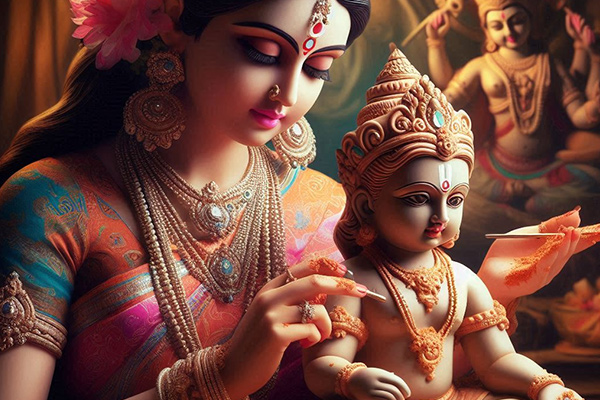
The story behind the observance of Ganesh Chaturthi revolves around the birth and significance of Shri Ganesha, the elephant-headed deity who is widely revered as the remover of obstacles and the god of beginnings.
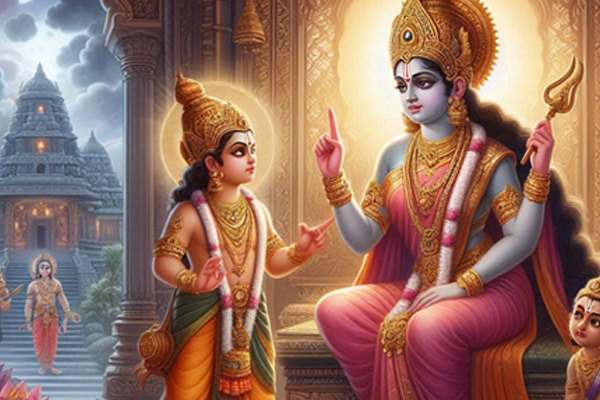
According to Hindu mythology, Goddess Parvati created Ganesha from the sandalwood paste she used for her bath and breathed life into him. She instructed Ganesha to stand guard while she bathed. During this time, Bhagwan Shiva, Parvati's husband, returned home. Ganesha, following his mother's orders, blocked Shiva's entry, unaware of who he was. Enraged by the boy's defiance, Shiva beheaded Ganesha with his trident.
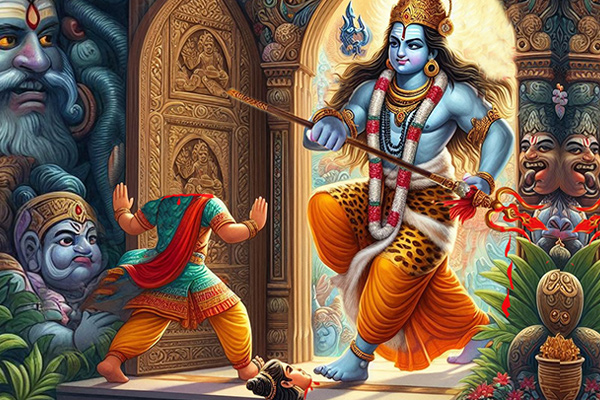
Parvati was heartbroken and demanded that Shiva restore Ganesha to life. Realizing his mistake and to console his grief-stricken wife, Shiva instructed his followers to bring the head of the first creature they found facing north. They returned with the head of a mighty elephant, which Shiva placed on Ganesha's body, reviving him. Thus, Ganesha came to have the head of an elephant.
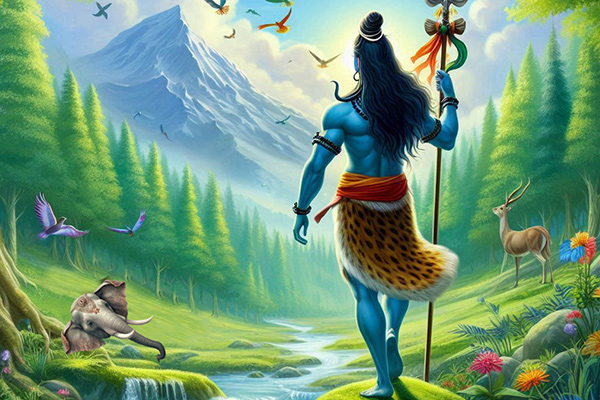
To pacify Maa Parvati further, Shiva granted Ganesha a boon that he would be worshipped first in any ritual or ceremony, and that he would be known as the remover of obstacles and the god of wisdom and beginnings.
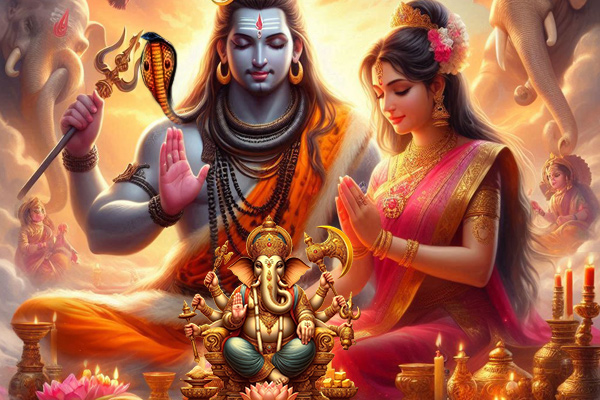
This story forms the basis of Ganesh Chaturthi, a festival celebrated with great devotion and fervor. Devotees observe fasts, perform rituals, and recite this story to honor Shri Ganesha, seeking his blessings for wisdom, prosperity, and the removal of obstacles in their lives. The festival culminates with the immersion of Ganesha idols in water, symbolizing the cycle of creation and dissolution in the universe.
Ganesh Visarjan Procedure
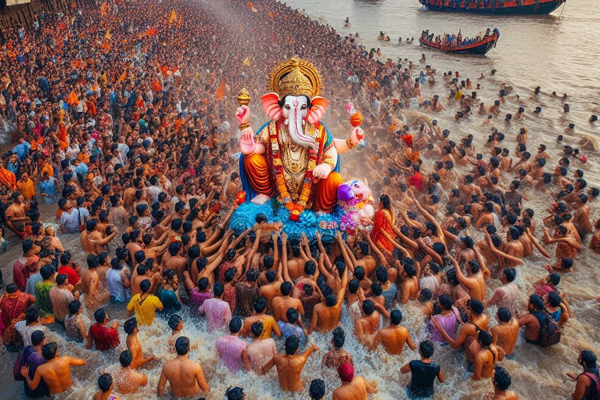
Depending on the family tradition, Ganesh Visarjan is done on one and half-day or the third, fifth, seventh, ninth, or eleventh day.
On the day of Ganesh Visarjan, the family gathers in front of the idol and performs the final puja with flowers, lighting diyas, incense sticks, modaks, ladoos and other eatables prepared for the day. The puja concludes with the waving of camphor flame in front of the idol.
The whole family chants prayers. The head of the family then sprinkles turmeric rice (Akshat) on the idol, finally doing a Namaskar.
The eldest male member of the family touches the idol and gently moves it as a mark of starting the farewell journey.
One must offer curd and sweets to Shri Ganesha as they bid him farewell. The family bundles some rice and cereals in a red cloth to accompany him during his voyage back to his abode.
The family then chants the shlokas of Ganesh. The designated male member carries the idol and takes the idol around the house for a final round.
More members gather for the visarjan and set out to bid farewell to Ganesha. Upon reaching the visarjan spot, which is usually a water body like river, lake, pond, or sea, the Ganesh idol is respectfully immersed in the water accompanied by the chanting of Ganesh names and slogans.
The devotees pray Shri Ganesh to bless their households and return for the puja next year.
People should use eco-friendly idols and perform immersion/visarjan at home. If that is not possible at home, then idols should be immersed in nearby artificial ponds.
Ganesh Visarjan Story
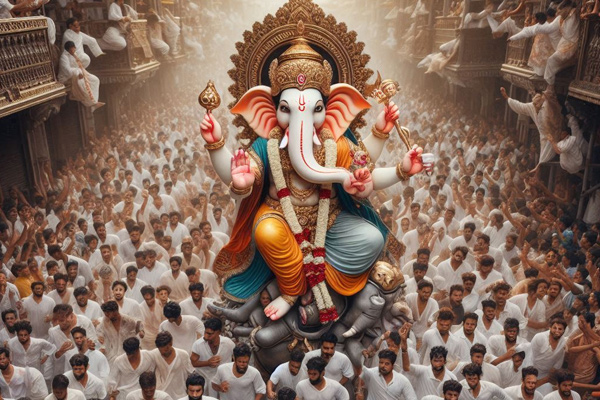
Ganesh Chaturthi Visarjan marks the conclusion of the ten-day Ganesh Chaturthi festival, which celebrates the birth of Ganesha. According to tradition, the visarjan (immersion) of Ganesha idols symbolizes the cycle of birth, life, and rebirth, reflecting the belief in the impermanence of life.
The story behind the Visarjan relates to Ganesha's visit to Earth. It is believed that during Ganesh Chaturthi, Ganesha descends from his celestial abode to Earth to bless his devotees with prosperity, wisdom, and the removal of obstacles. At the end of the festival, the immersion of Ganesha idols in water signifies Ganesha's return to Mount Kailash, his divine home, to rejoin his parents, Bhagwan Shiva and Maa Parvati.
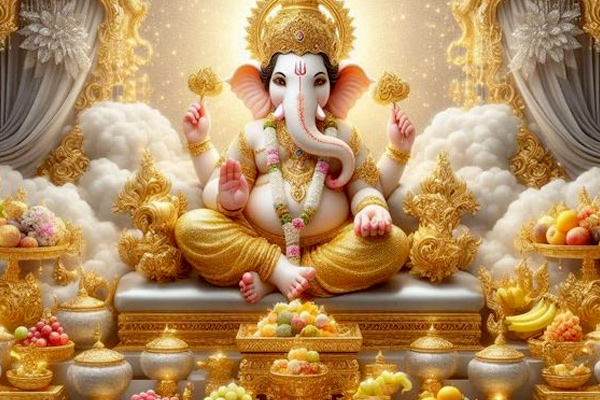
The Visarjan also represents the devotees' heartfelt request to Ganesha to return the following year, continuing the cycle of his divine presence and blessings. The immersion is performed with great devotion, accompanied by prayers, singing, and dancing, as devotees bid farewell to Ganesha with the hope of his return next year.
Who started Ganesh Chaturthi?
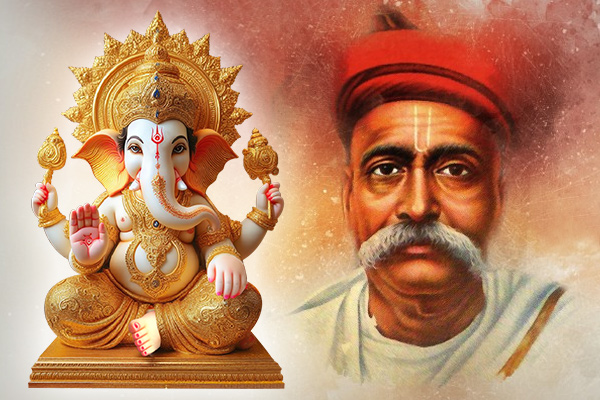
Ganesh Chaturthi is one of the most resplendent festivals celebrated in India, mainly in Maharashtra. Over time, the festival is celebrated with the same fervour in many parts of south India and Gujarat. Bal Gangadhar Tilak, nationalist and 'The Father of Indian Unrest' as described by the British, was the man behind turning a private, household Ganesh Chaturthi celebration to a gala event. During the British colonial rule in India, Tilak saw an opportunity to use the festival to bring people together, inspire a sense of unity and patriotism, and circumvent the colonial restrictions on public assemblies and meetings. He encouraged the public celebration of Ganesh Chaturthi as a community event, emphasizing the cultural and social aspects of the festival.
By turning Ganesh Chaturthi into a public event, Tilak helped foster a sense of unity and solidarity among people of different castes and communities. The festival became a platform for social and political gatherings, as well to instill a sense of pride in Indian culture and traditions. Over time, Ganesh Chaturthi grew in popularity and became one of the most widely celebrated festivals in India.
Today, Ganesh Chaturthi is observed with great enthusiasm across India and in many parts of the world, with elaborate decorations, processions, prayers, and rituals marking the occasion. It is a time for people to come together, seek the blessings of Bhagwan Ganesha, and celebrate the values of wisdom, prosperity, and harmony that he represents.
Why We Should Not See Moon on Ganesh Chaturthi (Ganesh Chaturthi and Moon Story)
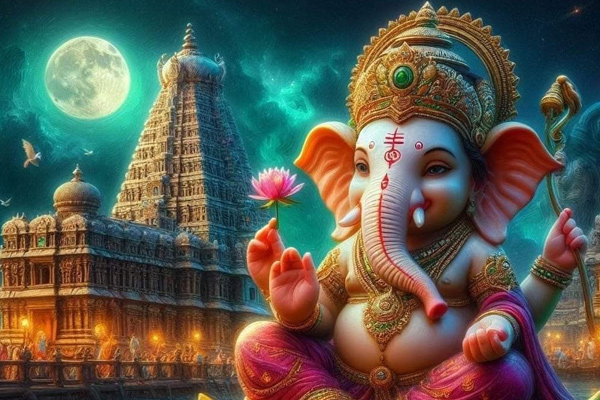
As per the tradition, it is believed that if a person sees the moon on Ganesh Chaturthi, they'll be cursed with accusations of theft, or as known in the legend, the Mithya Dosha. Hence, we should not see moon on Ganesh Chaturthi.
As the legend goes, it is said that God Chandra (moon), who was very handsome and took huge pride in his looks, once mocked Shri Ganesha for his appearance by making sarcastic remarks about his big belly and elephant head.
Shri Ganesha had had enough and decided to teach Chandra a lesson. Ganesha cursed Chandra saying that no one shall ever look at his beauty again and whoever looked at the moon, will have to face false allegations and invite a bad reputation.
Devastated, Chandra realized his mistake and apologized to Lord Ganesha. So, while lifting the curse, Shri Ganesha added a clause that everyone will be able to look at the moon's beauty except on the day of 'Bhadrapada Chaturthi', also celebrated as Ganesh Chaturthi.
Sloka for Seeing Moon on Ganesh Chaturthi
If you accidentally sight the moon on Ganesh Chaturthi, you should chant the Mithya Dosha Prevention Mantra to absolve yourself of the curse.
The mantra is: सिंहः प्रसेनमवधीत्सिंहो जाम्बवता हतः। सुकुमारक मारोदीस्तव ह्येष स्यमन्तकः॥ (Simhah Prasenamavadhitsimho Jambavata Hatah। Sukumaraka Marodistava Hyesha Syamantakah॥)
Spiritual items related to Ganesha
Eight Mukhi Indonesia Rudraksha
Eight Mukhi Rudraksha Bead is ruled by Lord Ganesh. As per the Glory of Rudraksha section of the Shiva Purana, an 8 Mukhi Rudraksha bead destroys lethargy, low energy and vices. These beads clear all the obstacles that are hindering your personal and professional growth.
The Ganesh Rudraksha is highly beneficial for those facing obstacles and seeking good fortune. It brings prosperity and opens up limitless possibilities, especially for those starting new ventures or experiencing health challenges.
Cat's Eye, a gem of planet Ketu, enhances willpower, courage, wisdom, and stability, while leading the wearer toward moksha (enlightenment). Ideal for those seeking stability, continuous wealth, and the strength to overcome challenges, whether Ketu is benefic or malefic in their chart.
The Ganesh Yantra removes obstacles, bringing wealth, success, and happiness. It fulfills desires and enhances focus. It creates a powerful aura of positive energy, connecting the worshipper to cosmic beneficent energies and guiding them on a spiritual path.
Performing the Ganpati Puja brings blessings of success, prosperity, and the removal of obstacles in life. It enhances wisdom, knowledge, and spiritual growth. It is especially beneficial for those starting new ventures or seeking guidance on their spiritual journey.

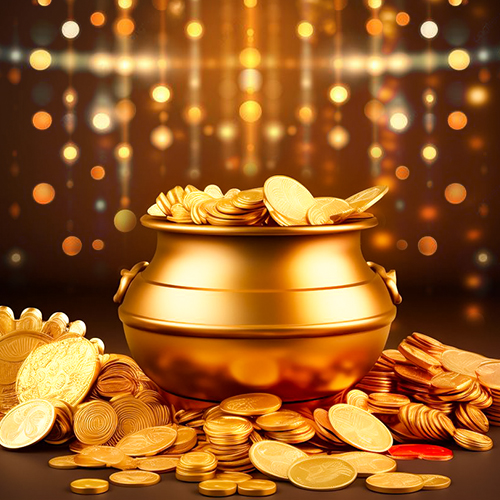
-in-Astrology.jpg)
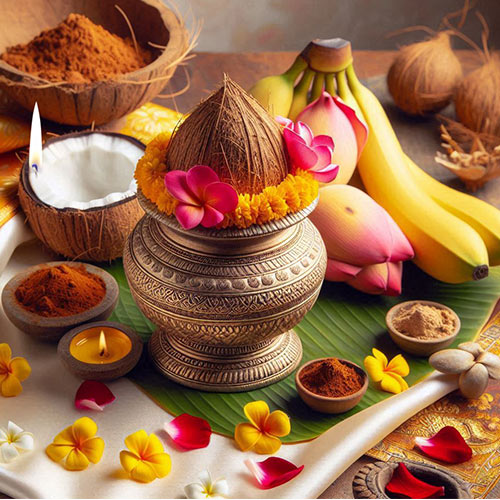
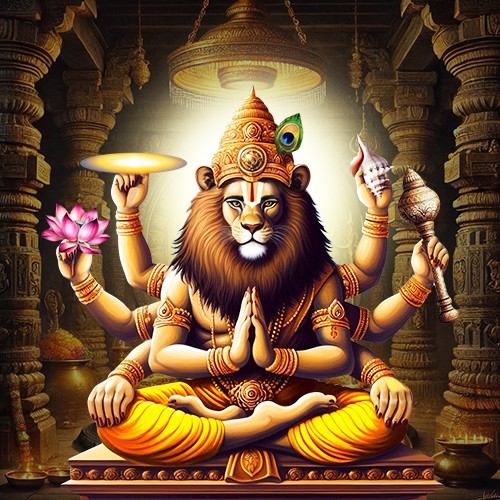
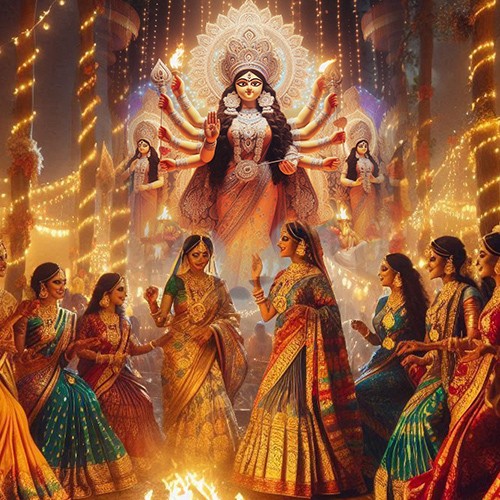
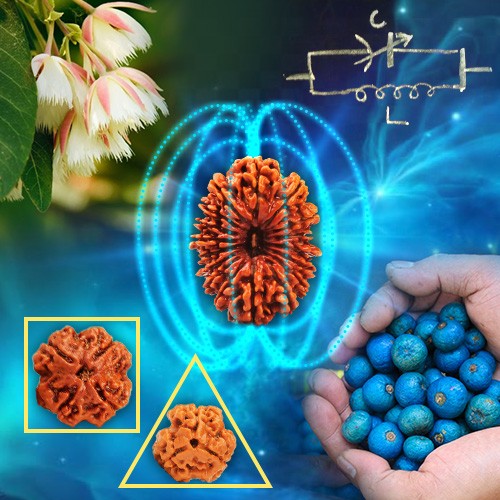

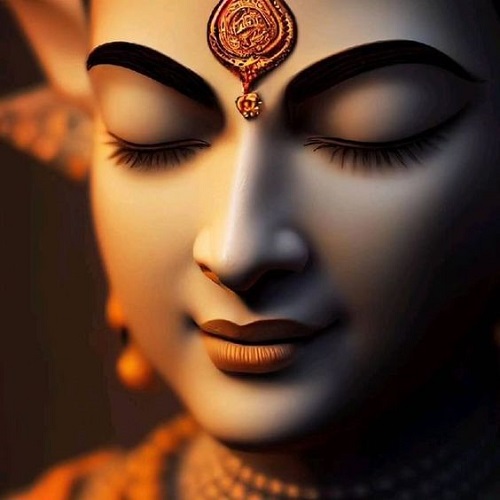
.jpg)
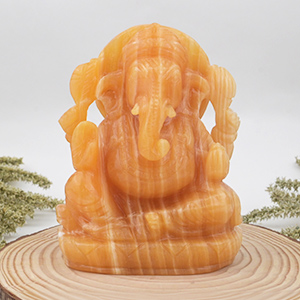
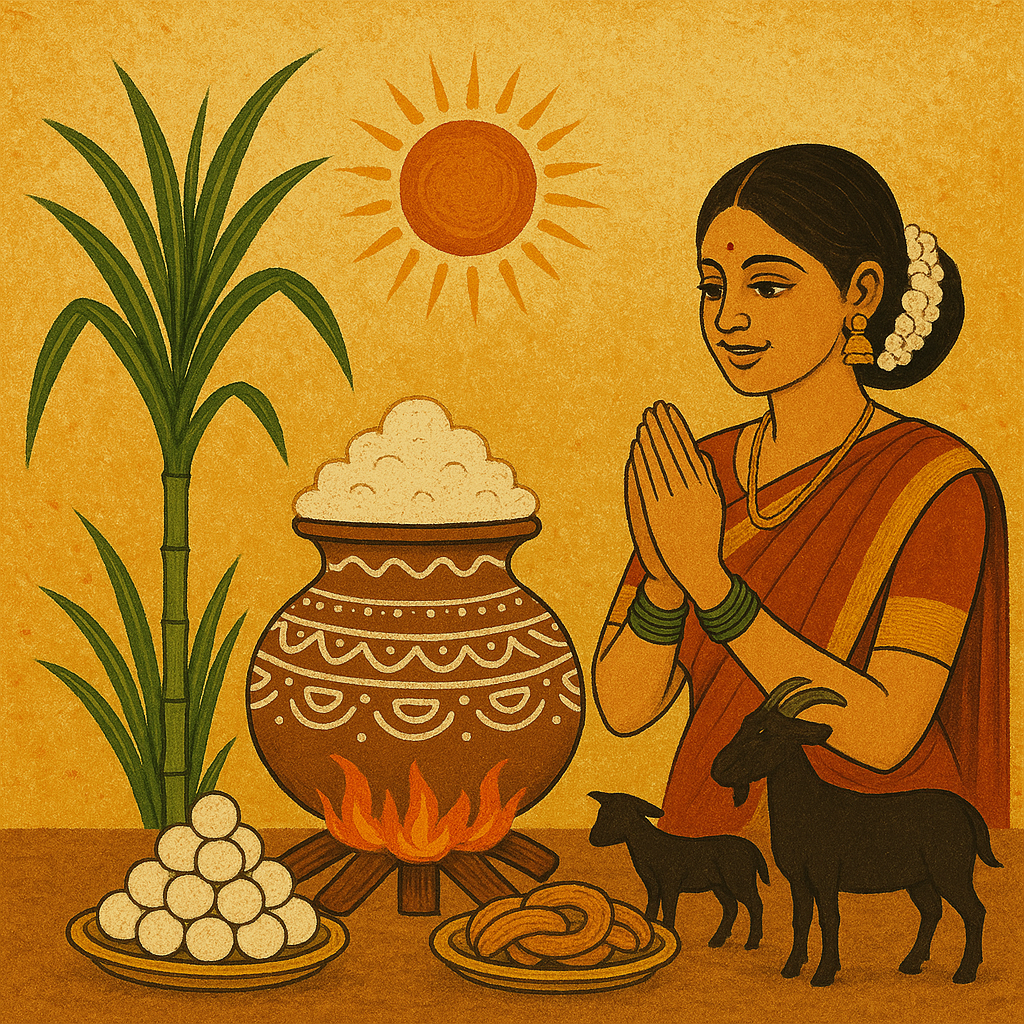

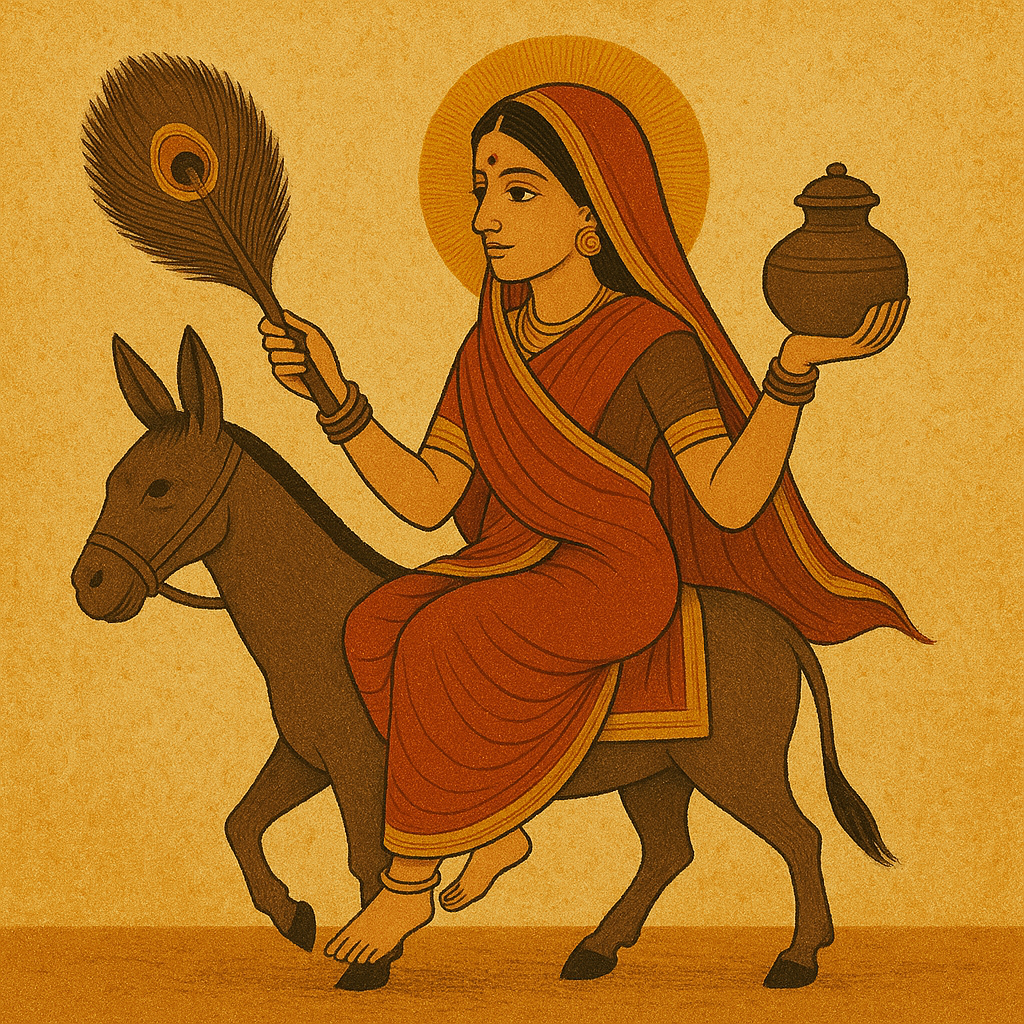
Comments 0
Leave your thought here